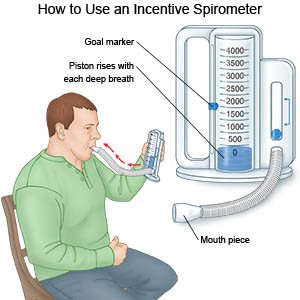Tracheotomy
Medically reviewed by Drugs.com. Last updated on Aug 4, 2025.
What do I need to know about a tracheotomy?
A tracheotomy is surgery to help you breathe through an opening in your trachea.
How do I prepare for a tracheotomy?
- Your surgeon will tell you how to prepare. He or she may tell you not to eat or drink anything after midnight on the day of your surgery. Arrange to have someone drive you home after you are discharged from the hospital.
- Tell your surgeon about all medicines you currently take. He or she will tell you if you need to stop any medicine for surgery, and when to stop. He or she will also tell you which medicines to take or not take on the day of your surgery.
- Antibiotics may be given to prevent a bacterial infection.
Related medications
What will happen during a tracheotomy?
- General anesthesia may be given to keep you asleep and free from pain during surgery. Local anesthesia may instead be used to numb the surgery area. Your healthcare provider will make a small incision in front of your neck and in your trachea. He or she may instead use a needle to put a small hole into your trachea.
- Your surgeon will insert a guidewire into your trachea and widen the hole. He or she may use a bronchoscope to take pictures of the inside of your airway. A bronchoscope is a tube with a light and camera on the end.
- A metal or plastic tube will then be placed into the incision or hole in your neck. This tube is called a trach tube.
What should I expect after a tracheotomy?
You will be taken to a room to rest until you are fully awake. You will be monitored closely for any problems. Do not get out of bed until your healthcare provider says it is okay. You will then be able to go home or be taken to a hospital room.
- You will not be able to speak for many days after your surgery. Your healthcare provider will help you learn how to let others know what you need. When you are able to speak, air will be released from the cuff around your trach tube. You may need to cover the trach tube with a finger while you breathe out. This will let air pass into your voice box and allow you to speak in a whisper. A one-way valve may also be used to help you talk.
- Wound and tube care will help decrease your risk of infection. Your healthcare provider will make sure that the hole in your neck and your trach tube are clean and dry. Your trach tube will have inner and outer tubes called cannulas. The inner cannula may need to be changed daily.
- Suction may be needed to remove any mucus you have trouble getting out of the trach tube. This is done by putting a plastic suction tube down into your trach tube to get the mucus out.
- Oxygen may be given to help you breathe easier. It may be given through your nose or through a plastic mask over your trach tube. Your trach tube may be connected to a ventilator if you cannot breathe well on your own. A ventilator is a machine that gives you oxygen and breathes for you.
- Deep breathing and coughing may help prevent a lung infection. Take deep breaths and cough 10 times each hour. Take a deep breath and hold it for as long as you can. Let the air out and cough strongly. Deep breaths help open your airway. You may be given an incentive spirometer to help you take deep breaths. Put the plastic piece in your mouth and take a slow, deep breath. Then let the air out and cough. Repeat these steps 10 times every hour.

- You may be fed liquid nutrition through a plastic tube put into your nose or mouth. When you are able to eat, you may start with blended foods.
- Mouth care will be given to keep your mouth clean and moist after your surgery. Healthcare providers may use swabs to care for your mouth.
What are the risks of a tracheotomy?
You may bleed more than expected or develop an infection. Air may get trapped under your skin through the opening in your neck. You may have trouble breathing if the trach tube is blocked by blood clots or mucus. You may have trouble swallowing after surgery. Your trachea may narrow and decrease the amount of air that gets into your lungs. The trach tube may also rub on your trachea or the blood vessels in your neck. This may create an abnormal hole that could cause bleeding or allow food and fluid to get into your lungs. Your body may react to the tube by forming tissue lumps around or near the opening. The trach tube may come out on its own.
Care Agreement
You have the right to help plan your care. Learn about your health condition and how it may be treated. Discuss treatment options with your healthcare providers to decide what care you want to receive. You always have the right to refuse treatment. The above information is an educational aid only. It is not intended as medical advice for individual conditions or treatments. Talk to your doctor, nurse or pharmacist before following any medical regimen to see if it is safe and effective for you.© Copyright Merative 2025 Information is for End User's use only and may not be sold, redistributed or otherwise used for commercial purposes.
Further information
Always consult your healthcare provider to ensure the information displayed on this page applies to your personal circumstances.
